

Caesarea
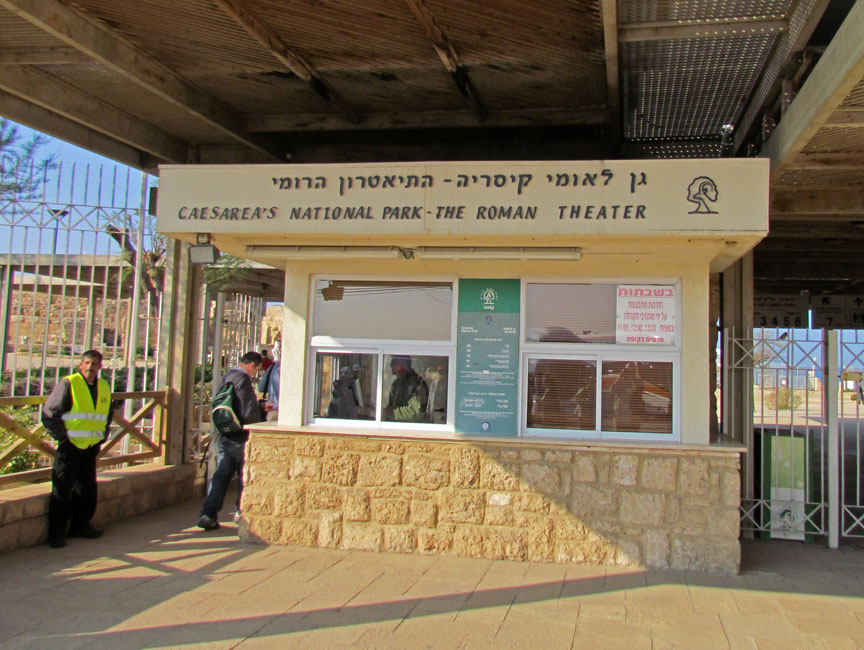
entrance to Roman Theater at Caesarea
More Photos of the Roman Theater
Caesarea (Hebrew: קֵיסָרְיָה; Arabic: قيسارية, Kaysaria) is a town in Israel on the outskirts of Caesarea Maritima, the ancient port city. It is located mid-way between Tel Aviv and Haifa (45 km), on the Israeli Mediterranean coast near the city of Hadera. Modern Caesarea as of December 2007 has a population of 4,500 people, and is the only Israeli locality managed by a private organization, the Caesarea Development Corporation, and also one the most populous localities not recognized as a local council. It lies under the jurisdiction of the Hof HaCarmel Regional Council.
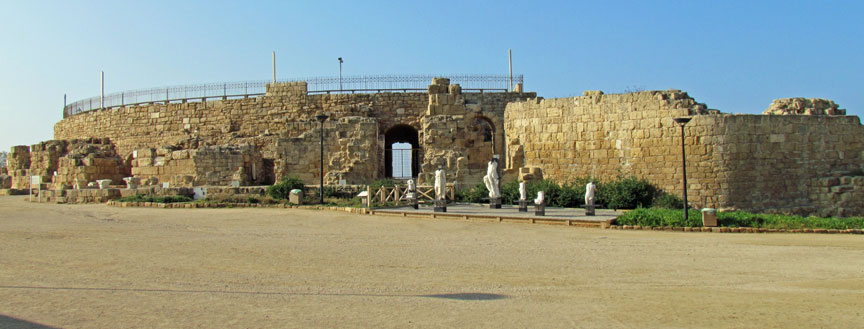

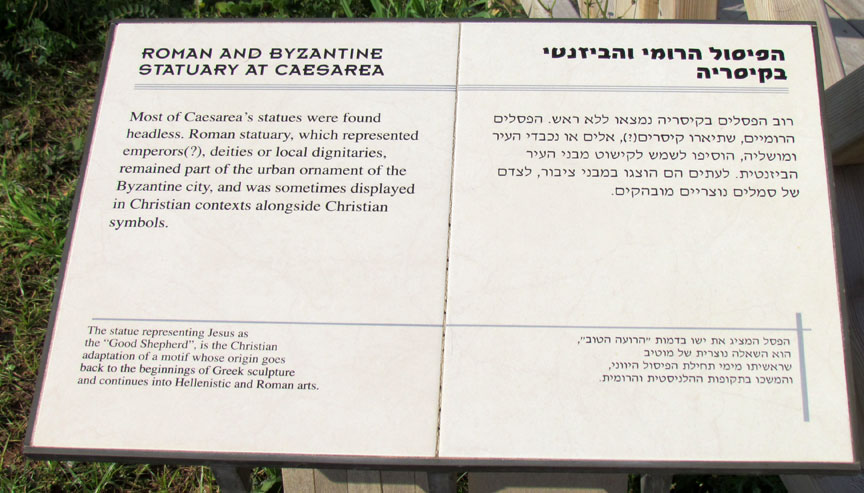
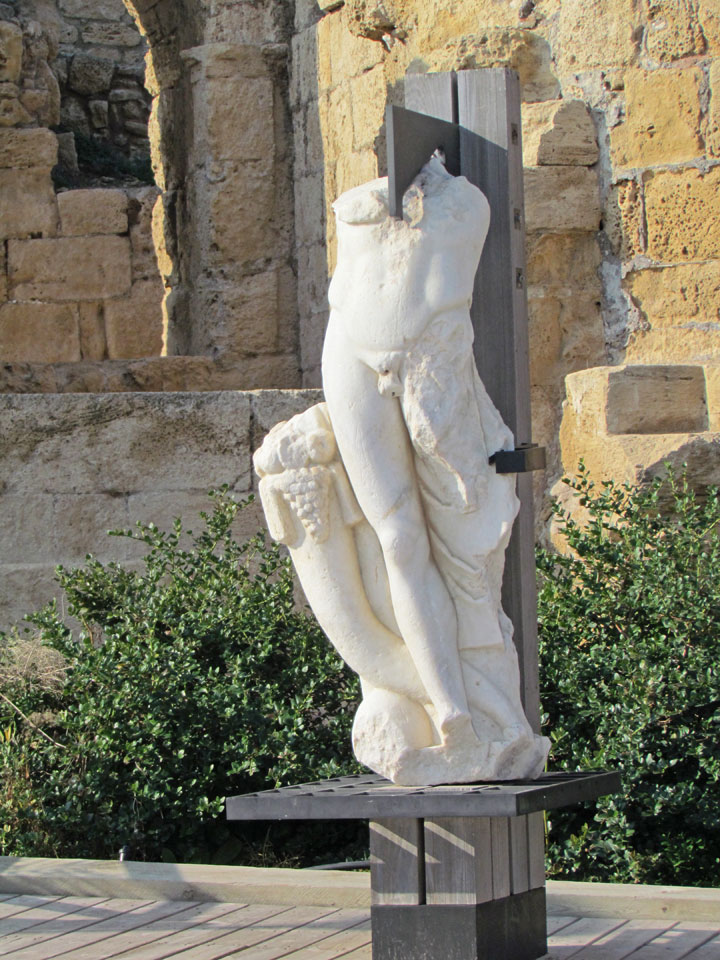
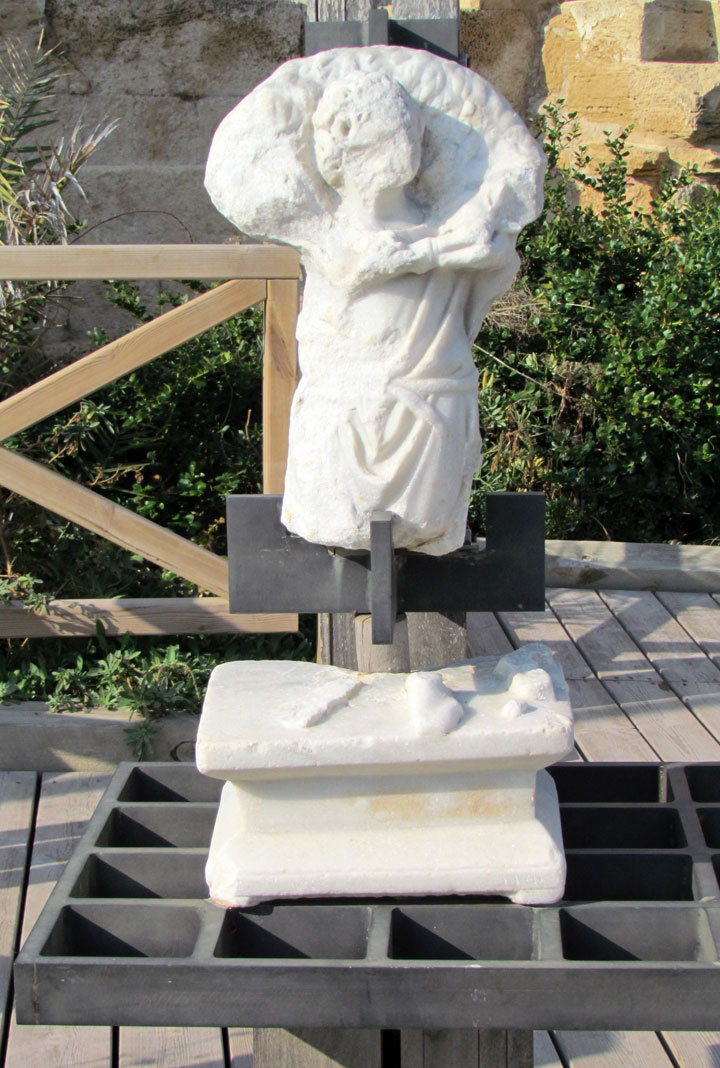
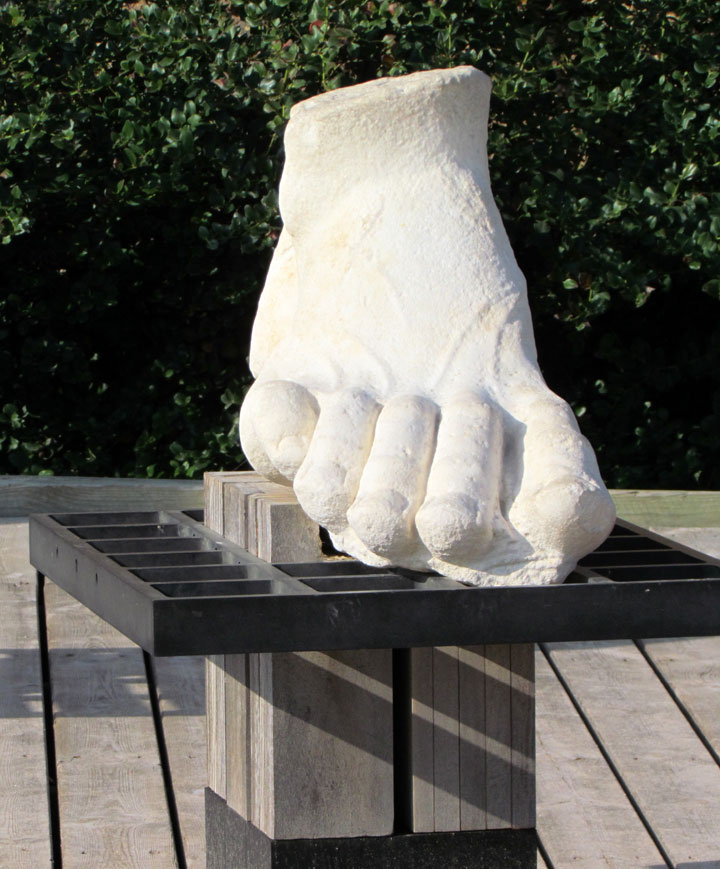
Caesarea is believed to have been built on the ruins of Stratonospyrgos (Straton's
Tower), founded by Straton I of Sidon. It was probably an agricultural
storehouse in its earliest configuration. In 90 BCE, Alexander Jannaeus captured
Straton's Tower as part of his policy of developing the shipbuilding industry
and enlarging the Hasmonean kingdom. Straton's Tower remained a Jewish city for
two generations, until the Roman conquest of 63 BCE when the Romans declared it
an autonomous city. The pagan city underwent vast changes under Herod the Great,
who renamed it Caesarea in honor of the Roman emperor, Julius Caesar.

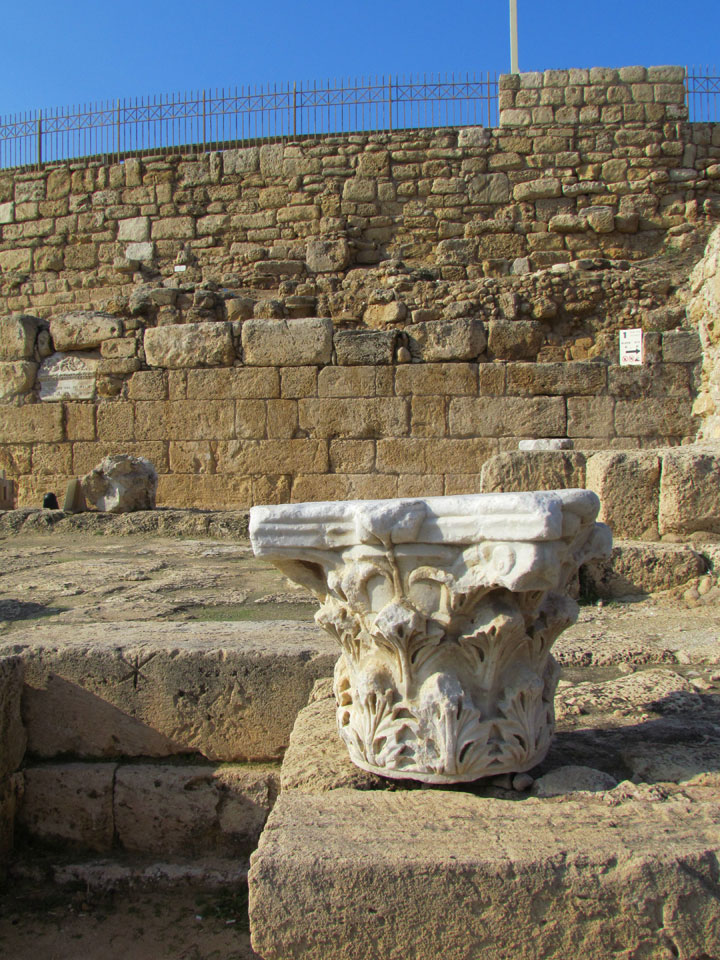
In 22 BCE, Herod began construction of a deep sea harbor and built storerooms,
markets, wide roads, baths, temples to Rome and Augustus, and imposing public
buildings. Every five years the city hosted major sports competitions, gladiator
games, and theatrical productions.
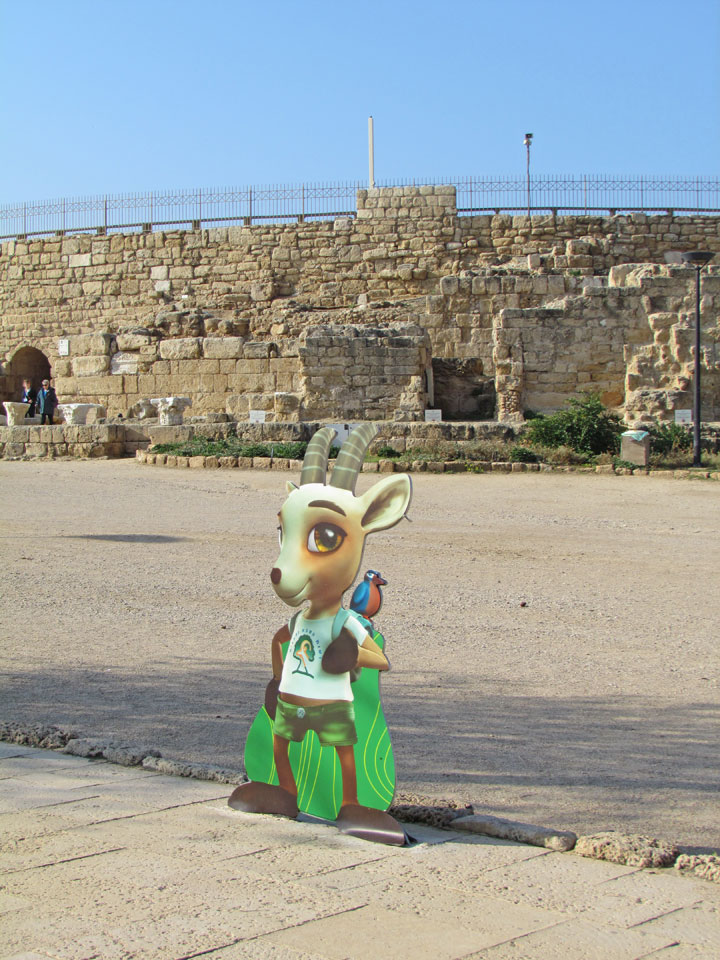

Caesarea also flourished during the Byzantine period. In the 3rd century the
Jewish sages exempted the city from Jewish commandments as by this time the
majority of the inhabitants were non-Jewish. The city was chiefly a commercial
centre relying on trade. The area was only seriously farmed during the Rashidun
Caliphate period, apparently until the Crusader conquest in the eleventh
century. Over time, the farms were buried under the sands shifting along the
shores of the Mediterranean.
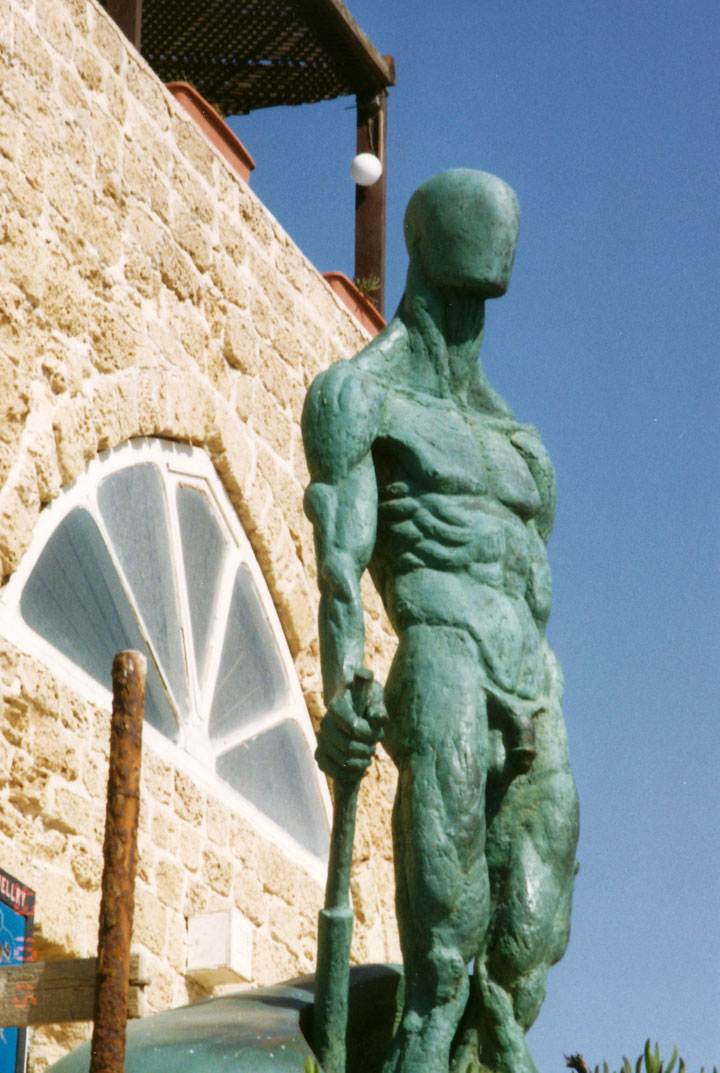
In 1251, Louis IX fortified the city. The French king ordered the construction
of high walls (parts of which are still standing) and a deep moat. However
strong the walls were, they could not keep out the sultan Baybars, who ordered
his troops to scale the walls in several places simultaneously, enabling them to
penetrate the city.
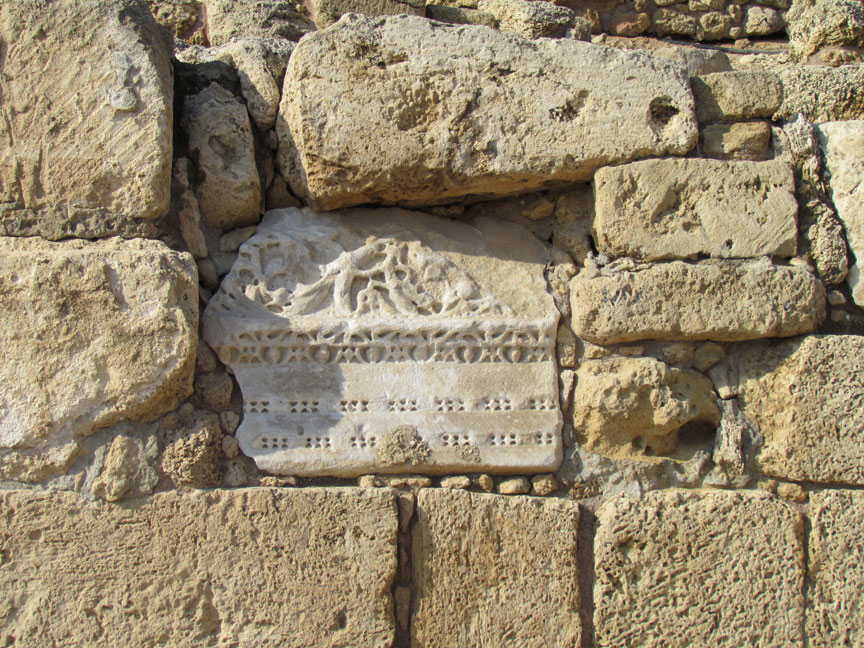
Caesarea lay in ruins until the nineteenth century when the village of Qisarya (Arabic: قيسارية, the Arabic name for Caesarea) was established in 1884 by Muslim immigrants from Bosnia who built a small fishing village on the ruins of the Crusader fortress on the coast. The kibbutz of Sdot Yam was established 1 km south in 1940. Many of Qisarya's inhabitants left before 1948, when a railway was built bypassing the port, ruining their livelihood. Qisarya had a population of 960 in 1945. During the 1948 Arab-Israeli War part of the population fled for fear of attacks, before it was conquered by Jewish forces in February, after which the remaining inhabitants were expelled and the village houses were demolished.
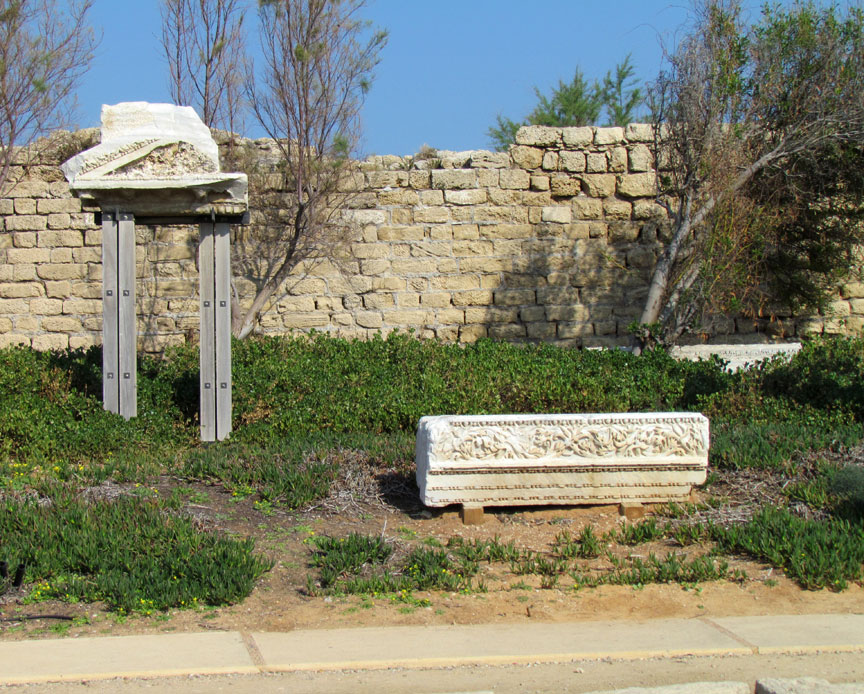
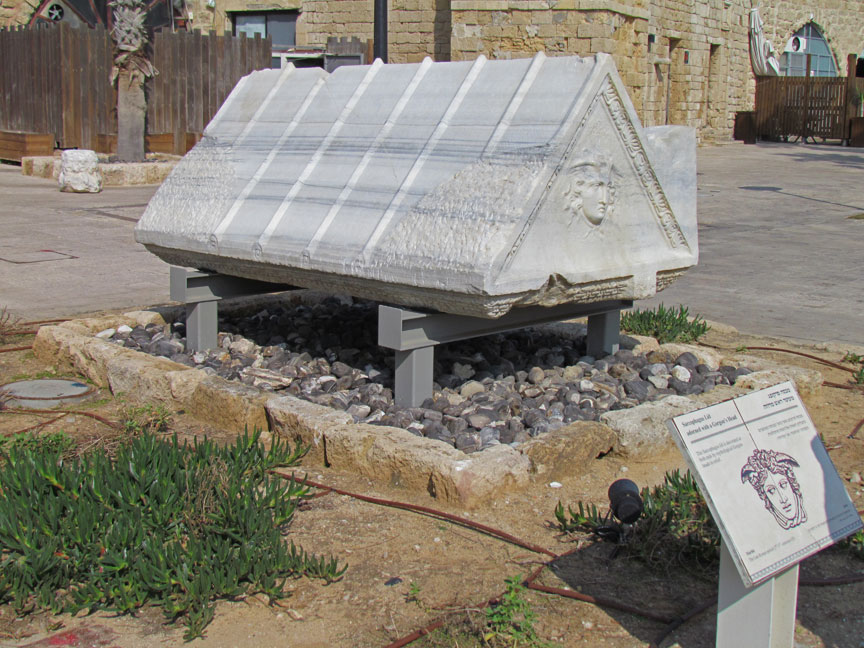
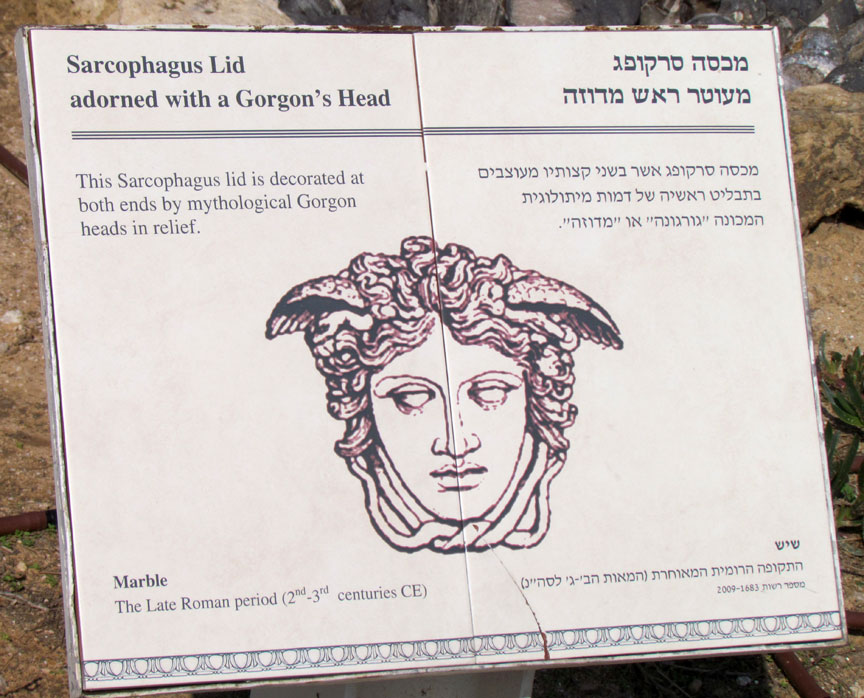
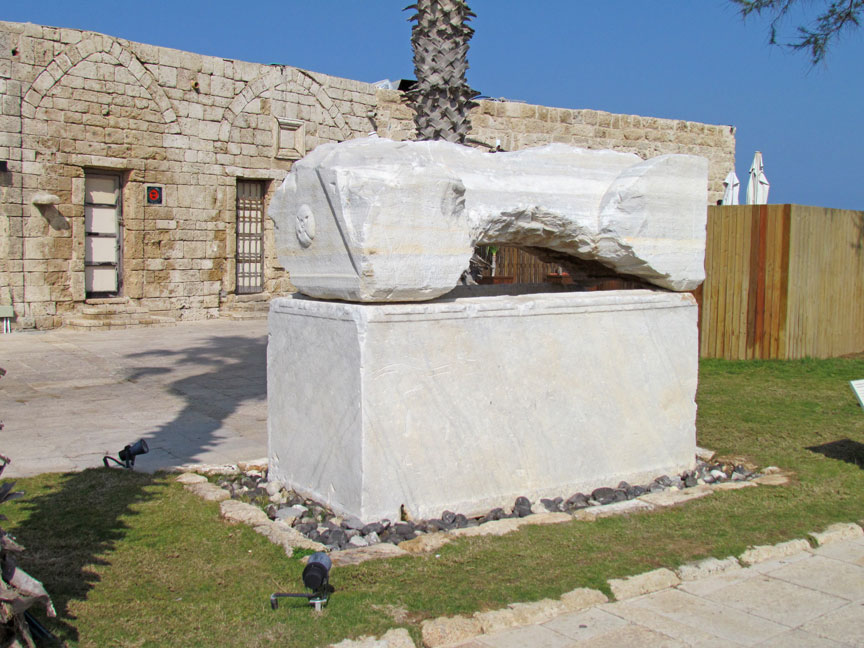
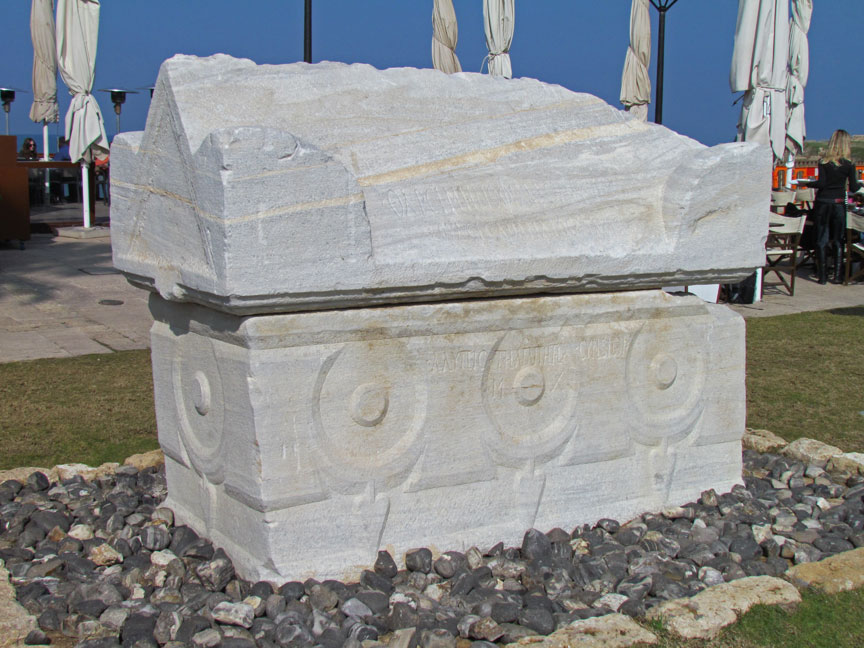
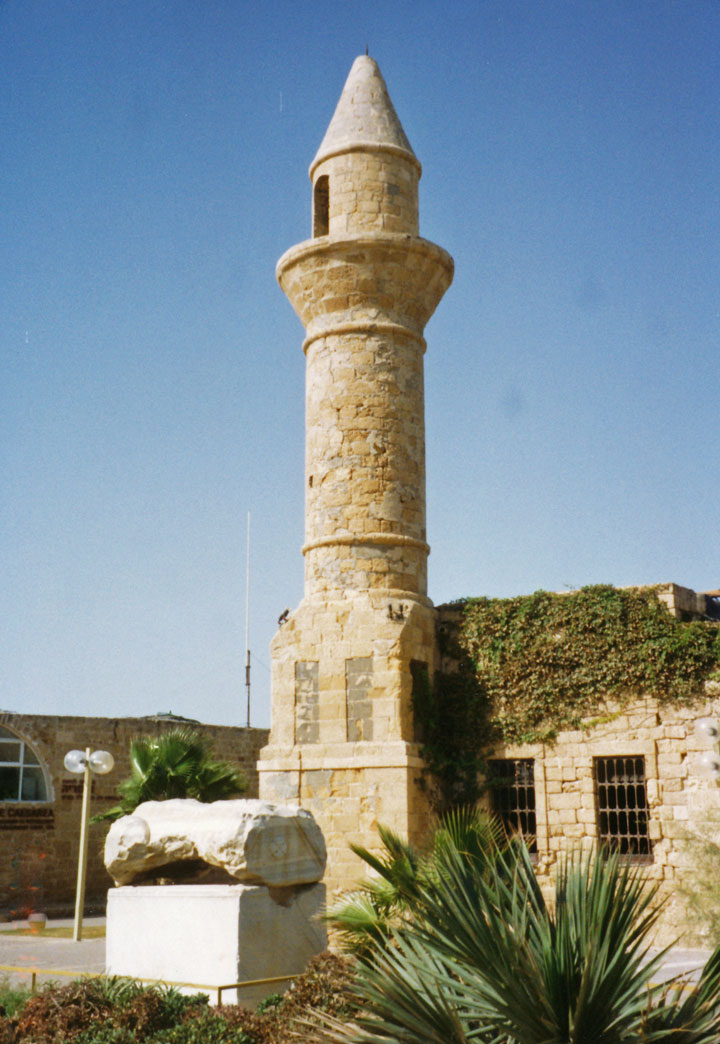
former mosque
With the establishment of Israel, the Rothschild family made an agreement to transfer most of their vast land holdings to the new state. A different arrangement was reached however for the 35,000 dunams of land the family owned in and around modern Caesarea: After turning over the land to the state, it was leased back (for a period of 200 years) to a new charitable foundation. In his will, Edmond James de Rothschild stipulated that this foundation would further education, arts and culture, and welfare in Israel. The Caesarea Edmond Benjamin de Rothschild Foundation was formed and run based on the funds generated by the sale of Caesarea land which the Foundation is responsible for maintaining. The Foundation is owned half by the Rothschild Family, and half by the State of Israel.

hippodrome
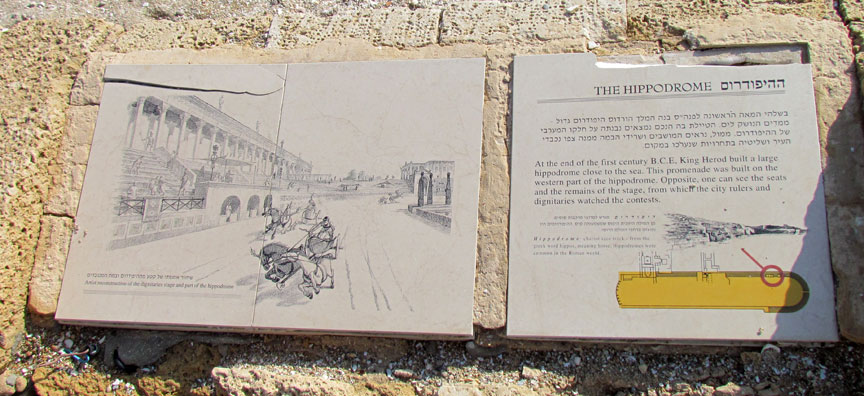
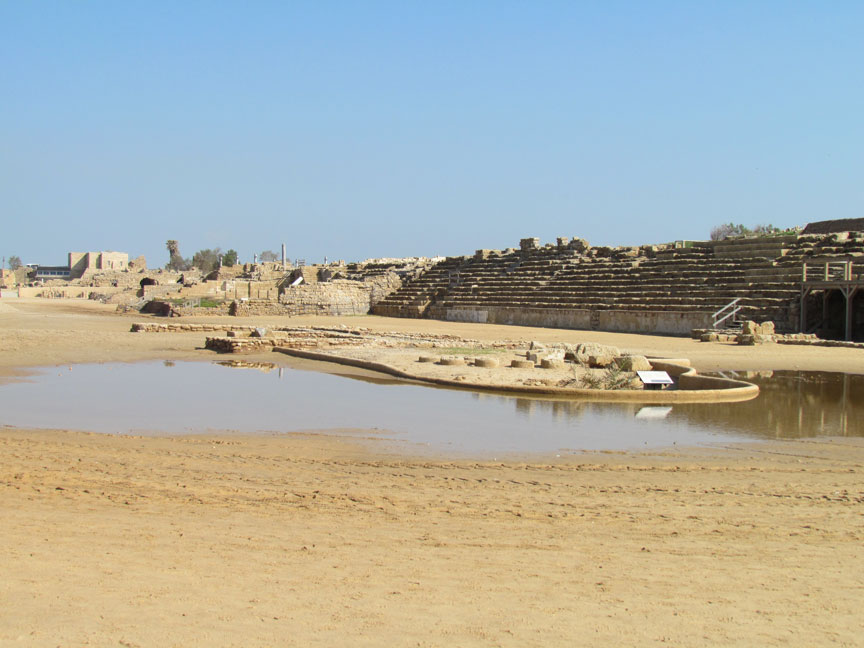
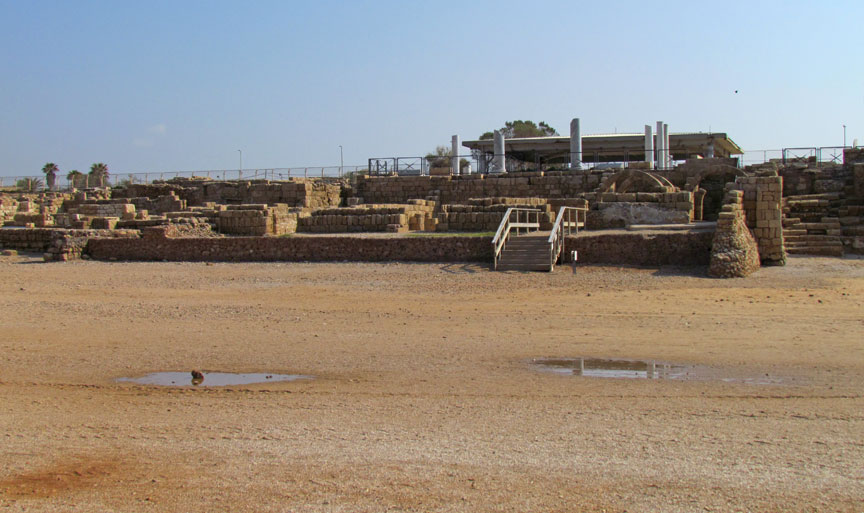
best viewing seats

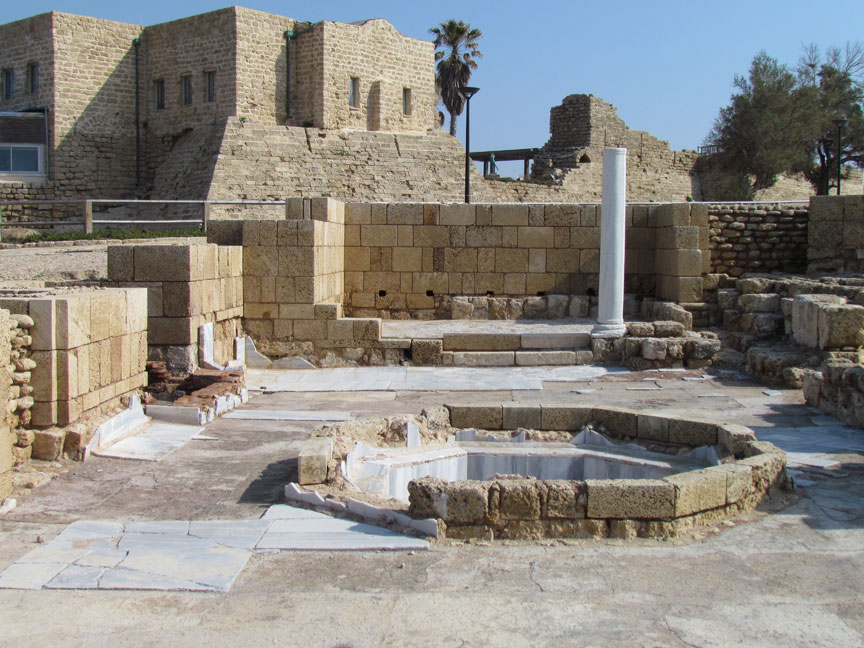
Byzantine Baptizing pool
The Foundation established the Caesarea Edmond Benjamin de Rothschild Development Corporation Ltd. (CDC) in 1952 to act as its operations arm. The company transfers all profits from the development of Caesarea to the Foundation, which in turns contributes to organizations that advance higher education and culture across Israel.
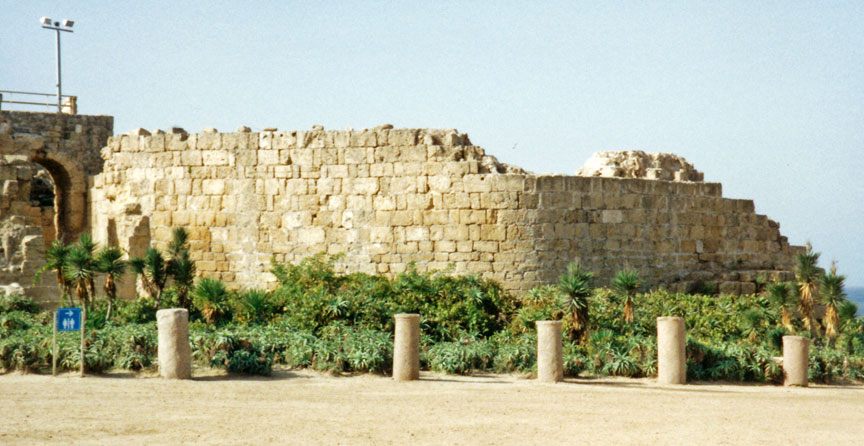
Caesarea is located on the Israeli Mediterranean coastal plain, the historic
land bridge between Europe, Asia and Africa approximaetly half-way between the
major cities of Tel Aviv 45 kilometers (28 mi) and Haifa 45 kilometers (28 mi).
Caesarea is situated approximately 5 kilometers (3 mi) north west of the city of
Hadera, and is bordered to the east by the Caesarea Industrial Zone and the city
of Or Akiva. Directly to the north of Caesarea is the town of Jisr az-Zarqa.
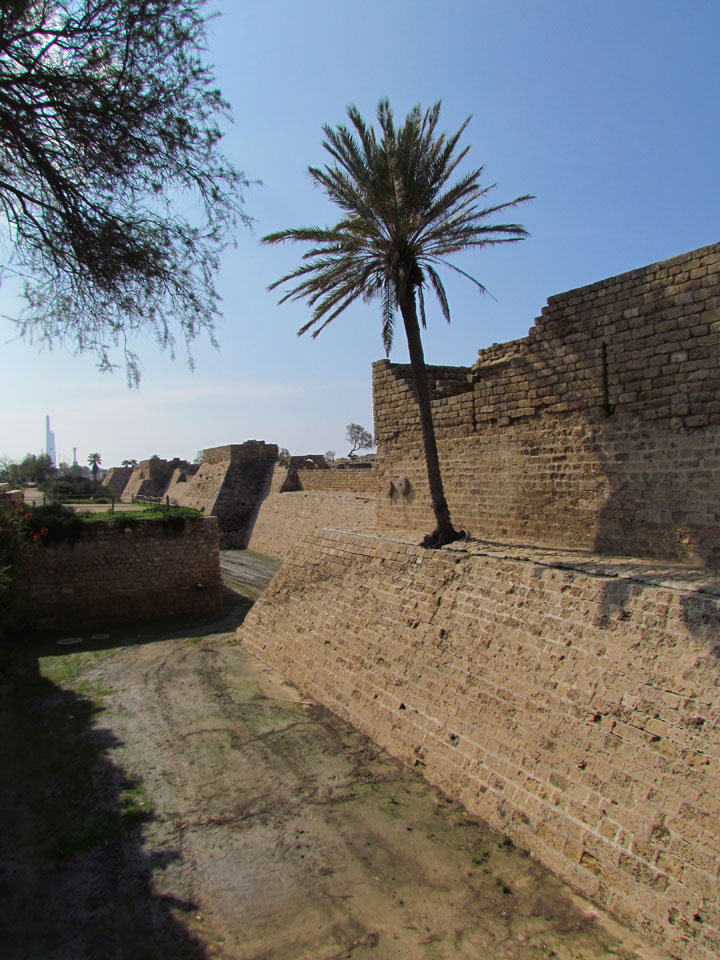
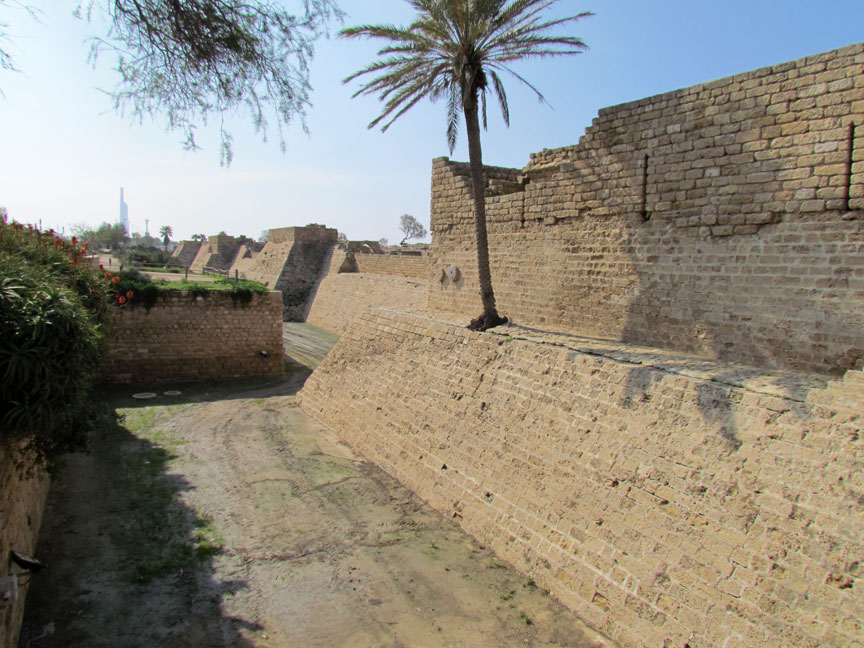
Caesarea is divided into a number of residential zones, known as clusters. The
most recent of these to be constructed is Cluster 13, which, like all the
clusters is given a name, in this case, "The Golf Cluster", owing to its close
proximity to the Caesarea Golf Course. These neighborhoods are universally
affluent, although vary largely in terms of average plot size.
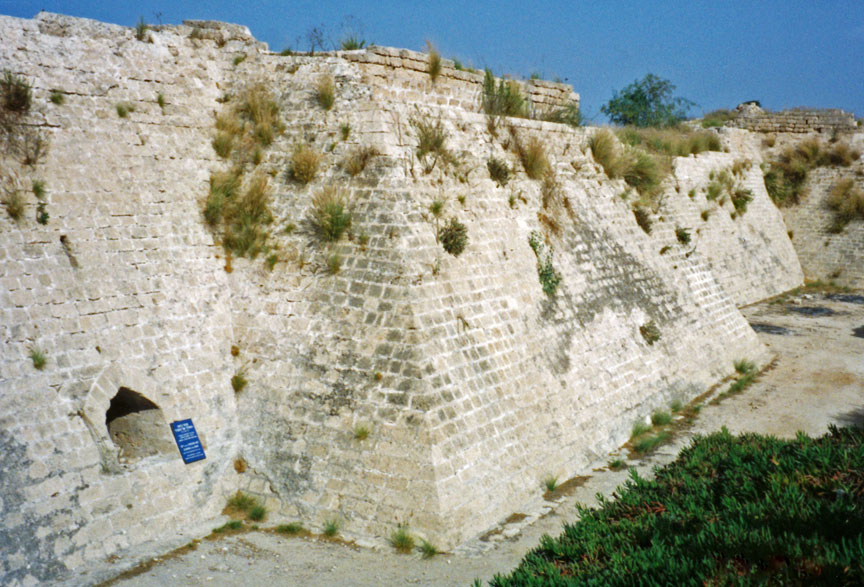
Beyond the eastern boundary of the residential area of Caesarea is Highway 2,
Israel's main highway linking Tel Aviv to Haifa. Caesarea is linked to the road
by the Caesarea Interchange in the south, and Or Akiva Interchange in the
center. Slightly further to the east lies Highway 4, providing more local links
to Hadera, Binyamina, Zichron Yaakov, and the moshavim and kibbutzim of Emek
Hefer. Highway 65 starts at the Caesarea Interchange and runs westwards into the
Galilee and the cities of Pardes Hanna-Karkur, Umm al-Fahm, and Afula.
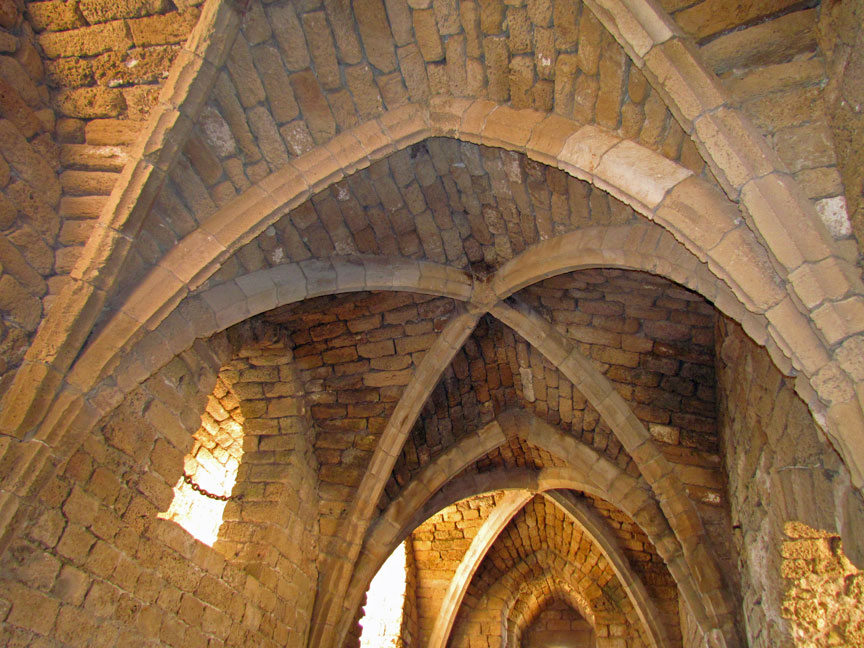
Crusader ceiling
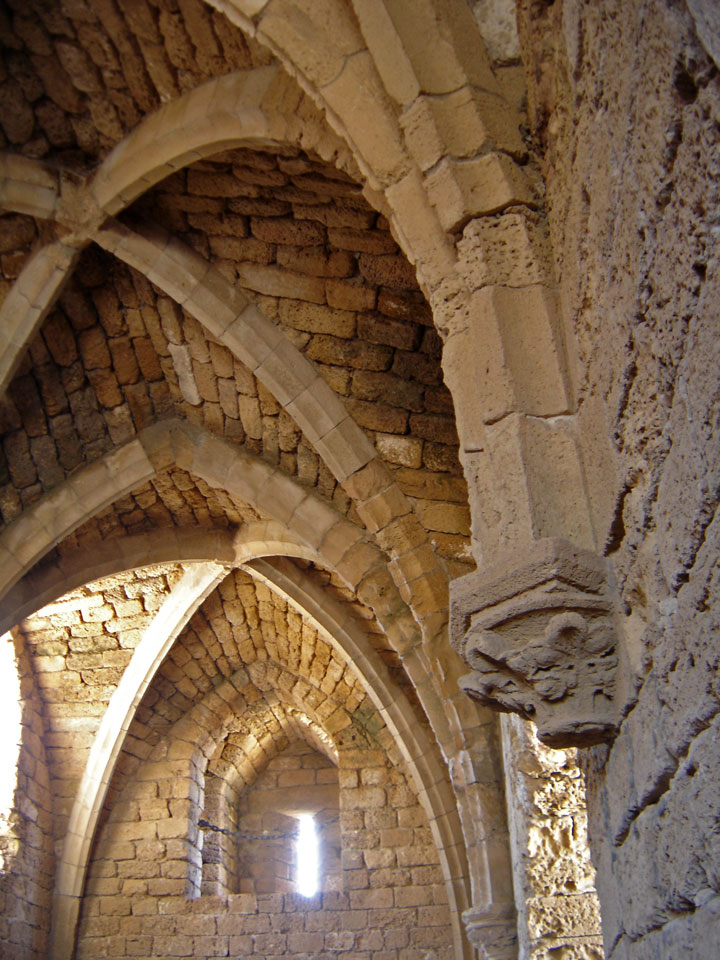
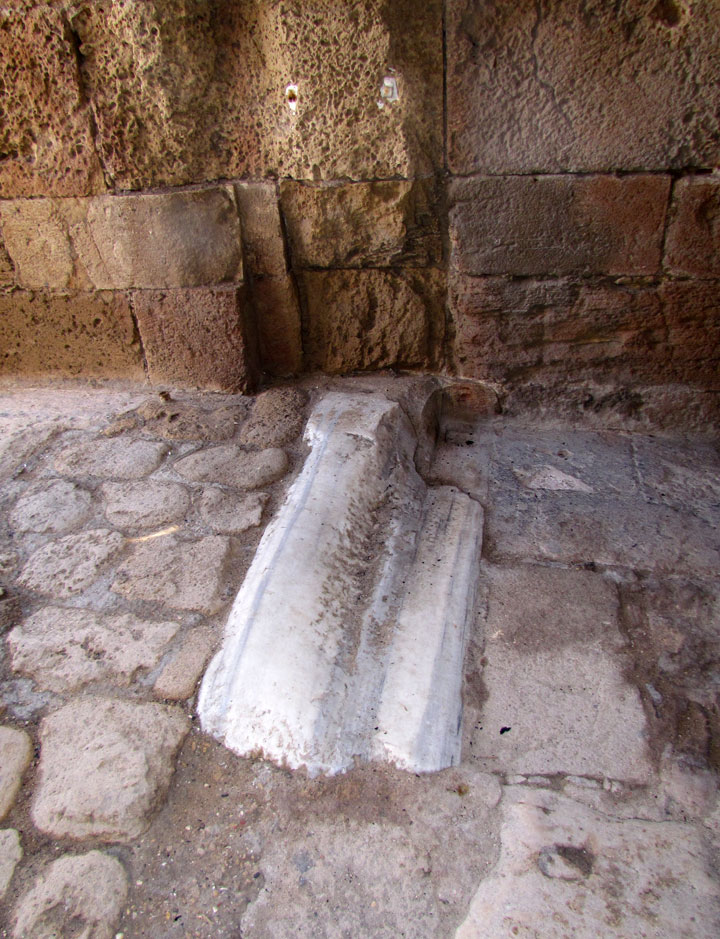
entrance door stone
Caesarea shares a railway station with nearby Pardes Hanna-Karkur which is situated in the Caesarea Industrial Zone and is served by the suburban line between Binyamina and Tel Aviv with two trains per hour. The Binyamina Railway Station, a major regional transfer station is also located nearby.

aqueduct
As of December 2007, Caesarea had a population of approximately 4,500. This represented a 2.5% growth rate over the past year, in part due to the development of new homes in the new Cluster 13. Estimations show that as of mid-2008, the population had risen by about 100 to 4,600.
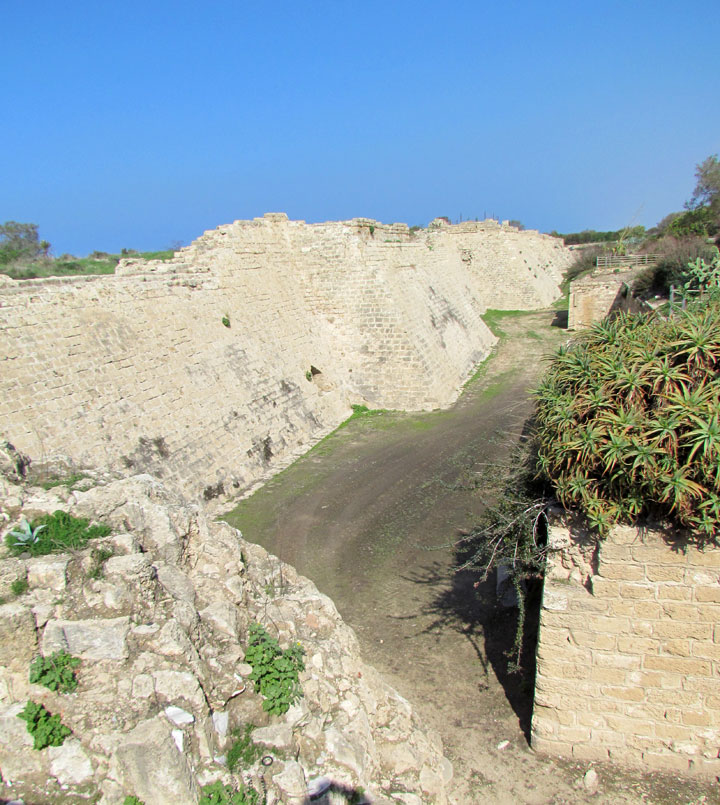

The Caesarea Edmond Benjamin de Rothschild Development Corporation (Hebrew:
החברה לפיתוח קיסריה אדמונד בנימין דה רוטשילד) is the operational arm of the
Caesarea Edmond Benjamin de Rothschild Foundation, whose goal is to establish a
unique community that combines quality of life and safeguarding the environment
with advanced industry and tourism.
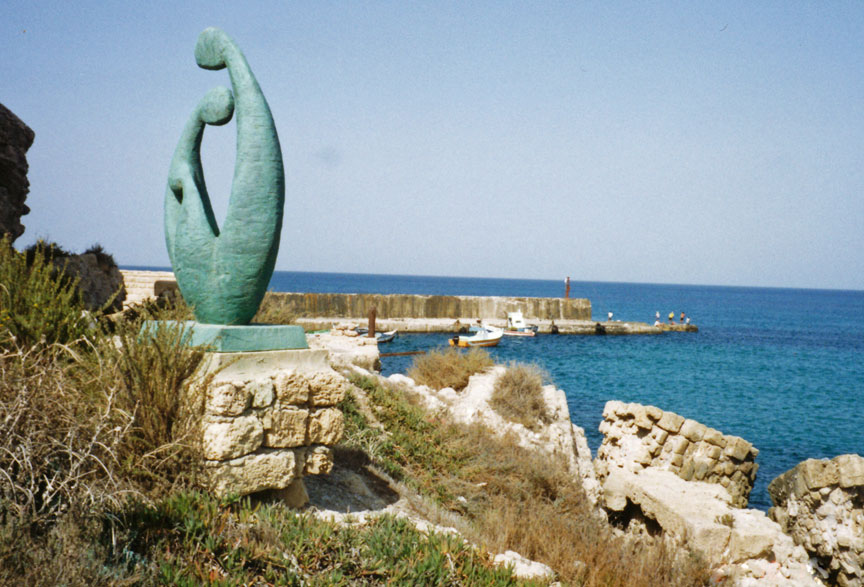
Caesarea Maritima
More Photos of Caesarea Maritima
Today, the Chairman of the Caesarea Foundation and the CDC is Baron Benjamin de Rothschild, the great grandson the Baron Edmond de Rothschild. The deputy chairman is Avraham Biger. In recent years, the Foundation has donated over 100 million shekels to organizations such as the Interdisciplinary Center in Herzliya, the Bezalel Academy, Yad Vashem, the Open University of Israel, as well as to theaters, museums, and musical projects across the country. Sizeable grants have also been made to the neighboring towns of Or Akiva and Jisr az-Zarqa.
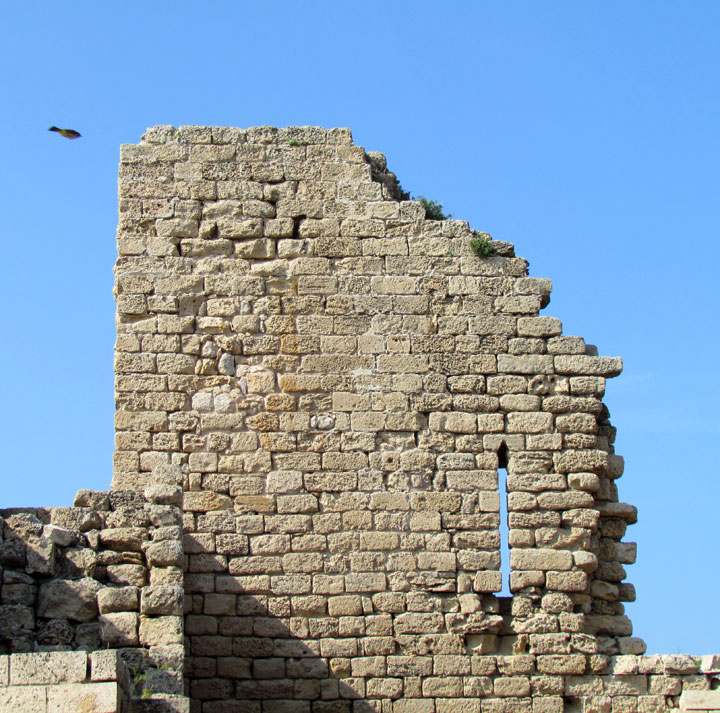
wall with arrow slit
Caesarea remains today the only locality in Israel managed by a private organization rather than a municipal government. As well as carrying out municipal services, the Caesarea Development Corporation markets plots for real-estate development, manages the nearby industrial park, and runs the Caesarea's golf course and country club, Israel's only 18 hole golf course.
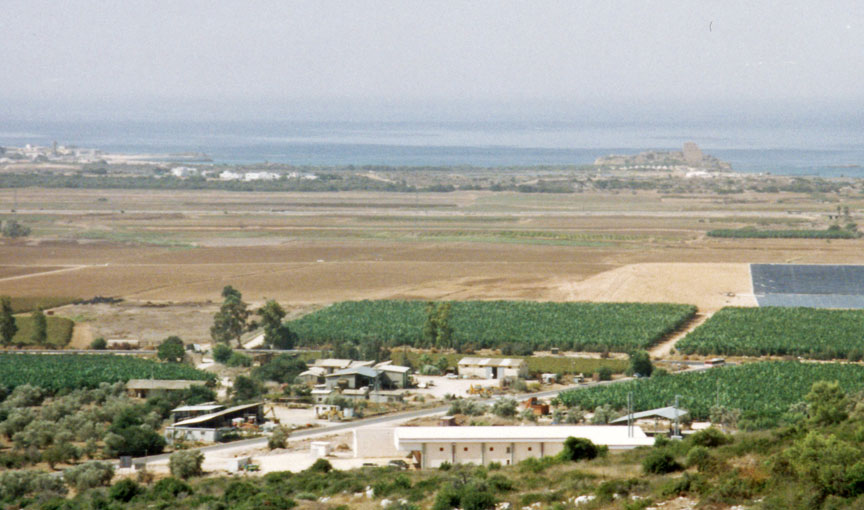
agricultural land along a fort by the sea
Modern Caesarea is one of Israel's most upscale residential communities. The Baron de Rothschild still maintains a home in Caesarea, as do many business tycoons from Israel and abroad.

the mountains
Caesarea is very much a dormitory settlement with many of its residents commuting to Tel Aviv and Haifa. On the outskirts of Caesarea, however, lies the Caesarea Business Park, a 3500 dunam business park. The park houses approximately 170 companies and employs about 5,500 people. Industry on the park varies from distribution to hi-tech sectors. The residential neighborhoods have a small shopping concourse with a newsagent, supermarket, optician, and bank. There are a number of restaurants and cafes scattered across the town, with a number within the ancient port.
Text from Wikipedia